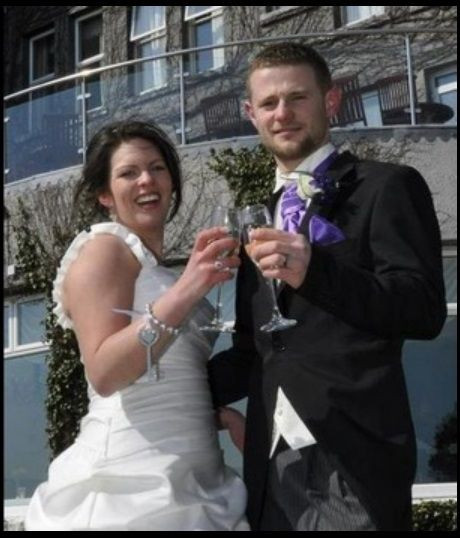Kiss of Life Follows I Do: Bride's Kiss Saves Guest After Heart Attack

Still in her wedding dress, a 24-year-old bride kept a 28-year-old man alive with mouth-to-mouth resuscitation after he collapsed during the reception.
"Our friend asked me for a dance, but while we were on the dance floor, he fell faint. I turned round to give him a chair and he collapsed," said Kylie Cox, new wife of Russell Cox and a staff nurse from Par, Cornwall, according to The Daily Mirror.
Cox's bridesmaid, also a nurse, and her uncle assisted while an ambulance was called, and all waited for paramedics to arrive. At that point, Mrs Cox's father called a halt to what remained of the evening reception.
The newlywed couple accompanied the man as he was rushed to hospital, where he was treated for a suspected heart attack. He is expected to make a full recovery.
"The doctors told us it was a miracle he survived," said Cox.
Sadly, less than eight percent of people who suffer cardiac arrest outside the hospital survive, according to the American Heart Association (AHA). Although effective bystander cardiopulmonary resuscitation (CPR) can double or triple a victim's chance of survival, only 32 percent of cardiac arrest victims get CPR from a bystander.
If you're not trained in CPR, the AHA recommends that you provide hands-only CPR — uninterrupted chest compressions of about 100 a minute — until paramedics arrive.
Nearly 383,000 out-of-hospital sudden cardiac arrests occur annually, reports the AHA, and 88 percent of cardiac arrests occur at home. A heart attack may cause cardiac arrest, yet the two are not the same. Sudden cardiac arrest, the AHA states, occurs when electrical impulses in the heart become rapid or chaotic, which causes the heart to suddenly stop beating. A heart attack occurs when the blood supply to part of the heart muscle is blocked.
In 1954, James Elam was the first to prove that expired air was sufficient to maintain adequate oxygenation and two years later, with Peter Safar, Elam invented mouth-to-mouth resuscitation. In 1960, cardiopulmonary resuscitation (CPR) was developed by the AHA to acquaint physicians with close-chest cardiac resuscitation and became the forerunner of CPR training for the general public.
Much earlier, though, the Paris Academy of Sciences officially recommended mouth-to-mouth resuscitation for drowning victims; this occurred in 1740.



























